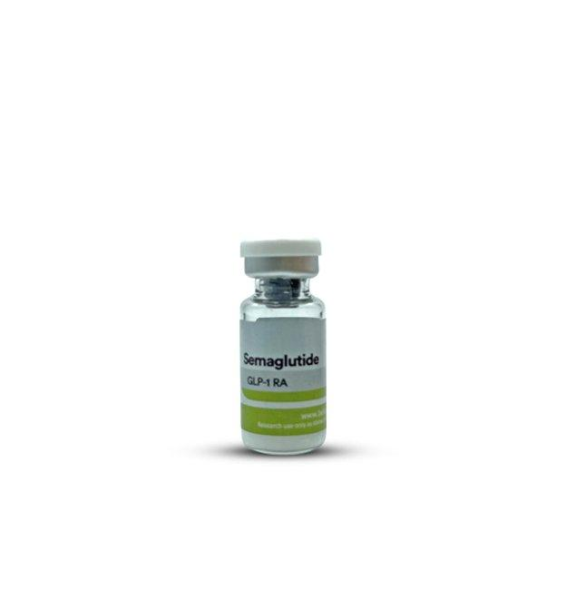Manufacturer:Beligas Pharmaceuticals
Substance:Glucagon-Like Peptide-1 (GLP-1)
Package qty.:vial / (5 mg)
SKU: P4118
Shipping From
Semaglutide 5mg (GLP-1) - Advanced Support for Body Composition & Metabolic Health
Brand: Beligas Pharmaceuticals
Action: Semaglutide is a Glucagon-Like Peptide-1 (GLP-1) receptor agonist. Its primary actions include slowing gastric emptying, increasing satiety (feelings of fullness), stimulating insulin release in response to high blood sugar, and inhibiting glucagon secretion. These mechanisms lead to significant appetite reduction and improved glucose control.
Use in Sports: As a professional trainer, I see the primary application of Semaglutide in sports as achieving and maintaining an optimal body composition. This is particularly relevant for athletes in weight-sensitive categories or those aiming to improve their power-to-weight ratio. By facilitating substantial fat loss and potentially aiding in the preservation of lean mass through appetite regulation, it can indirectly enhance performance. It is not a direct performance enhancer for strength, power, or endurance in the same way as anabolic or stimulant drugs.
Period of Drug Withdrawal: Semaglutide has a relatively long elimination half-life, typically around one week. This means it can take approximately 5-7 weeks for the drug to be fully cleared from the system after the last dose. Athletes must be aware of potential detection windows in anti-doping tests, although GLP-1 agonists are not typically on standard prohibited lists for anabolic agents but are often under monitoring programs.
Rate of Suppression of Own Testosterone Production: Semaglutide (GLP-1) does not directly suppress the production of endogenous testosterone. Its mechanism of action targets glucose and appetite regulation via the GLP-1 receptor, which is distinct from the hormonal pathways governing testosterone synthesis.
What Should Be Used During and After Use:
- During Use: The primary focus during Semaglutide use should be on adhering to a well-structured training program and a balanced, nutrient-dense diet to maximize its body composition benefits. Adequate hydration is also crucial. No specific drugs are typically required for concurrent use with Semaglutide for its intended purpose. However, individuals with pre-existing conditions (e.g., diabetes) should continue their prescribed medications under medical supervision.
- After Use: As Semaglutide does not directly impact testosterone production, a dedicated Post-Cycle Therapy (PCT) aimed at restoring natural testosterone is not necessary after discontinuing its use. The focus post-use should be on implementing sustainable lifestyle modifications, including diet and exercise, to maintain any achieved weight loss and body composition improvements.
Combinations of the Drug in Sports with Other Anabolic and Androgenic Drugs: Combining GLP-1 agonists like Semaglutide with anabolic and androgenic steroids (AAS) is not a common or typically recommended practice for performance enhancement due to their different primary mechanisms of action:
- AAS primarily promote muscle growth and increase strength.
- GLP-1 agonists primarily regulate appetite and metabolism for significant weight management.
While an athlete *might* theoretically use both concurrently for distinct goals (e.g., muscle gain from AAS while aiming for substantial fat loss with Semaglutide), this approach carries potential risks of overlapping or counteracting side effects and should only be considered under strict medical supervision. There are no established "performance-enhancing stacks" that routinely include GLP-1 agonists.
Possible Side Effects and How to Avoid Them: Common side effects of Semaglutide often involve the gastrointestinal system and can include nausea, vomiting, diarrhea, constipation, and abdominal pain. These are often dose-dependent and tend to subside over time. Less common but more serious side effects can occur.
- How to Avoid/Minimize: Initiate treatment at the lowest effective dose and gradually increase as tolerated, strictly following the prescribed titration schedule. Ensure adequate hydration and electrolyte intake. Eating smaller, more frequent meals and avoiding high-fat foods might help manage gastrointestinal discomfort. If side effects persist or become severe, discontinue use and consult a healthcare professional immediately. Individuals with a history of pancreatitis or medullary thyroid carcinoma should avoid GLP-1 agonists.
Why I Recommend This Drug (as a Trainer, with strict caveats): As a professional trainer, I would *only* consider recommending Semaglutide for athletes with a clear and significant clinical need for weight management and body composition optimization that is directly and negatively impacting their athletic performance (e.g., needing to meet stringent weight class requirements, where excess body fat is demonstrably hindering performance). It is crucial to understand that Semaglutide is not a direct performance enhancer for strength, power, or endurance. Its benefits are indirect, facilitating a healthier body composition. Any consideration of Semaglutide for an athlete must be under strict medical supervision, with a thorough understanding of potential side effects and in conjunction with a comprehensive and sustainable training and nutrition plan. It should never be considered a shortcut for performance enhancement.
Comparison with Other Drugs:
- Compared to Anabolic-Androgenic Steroids (e.g., Testosterone, Trenbolone): Semaglutide and AAS have fundamentally different primary actions and target different physiological pathways. AAS directly promote muscle growth and increase strength, while Semaglutide primarily regulates appetite and metabolism for significant weight management. They are not interchangeable for performance enhancement.
- Compared to other Weight Loss Drugs (e.g., Stimulants, other appetite suppressants): Semaglutide works through a different hormonal pathway (GLP-1) compared to many other weight loss drugs. Stimulants often have more direct central nervous system effects, while other appetite suppressants may have different mechanisms. GLP-1 agonists often lead to more gradual and potentially more sustainable weight loss with a distinct side effect profile.
- Compared to Performance Enhancers (e.g., Creatine, Beta-Alanine): These supplements directly support specific aspects of exercise performance (energy production, muscle endurance) without the significant metabolic and body composition effects of GLP-1 agonists.
